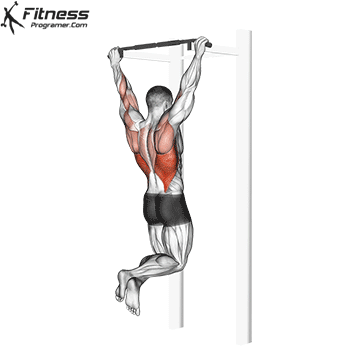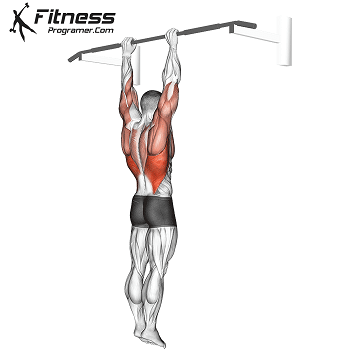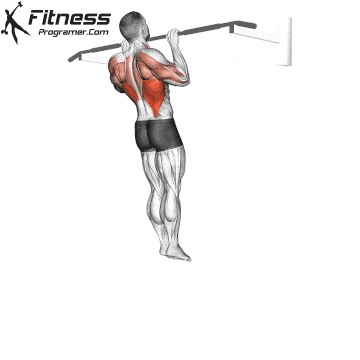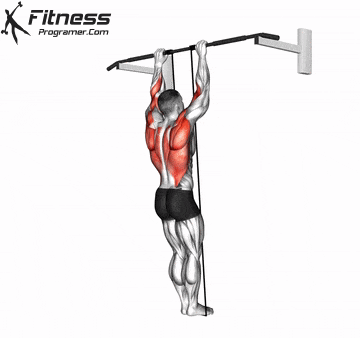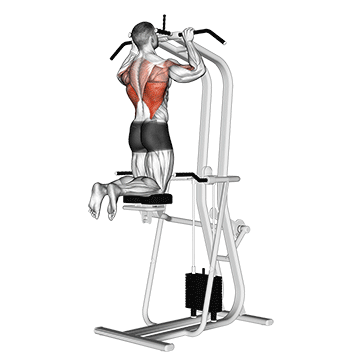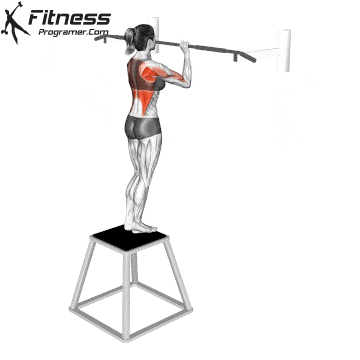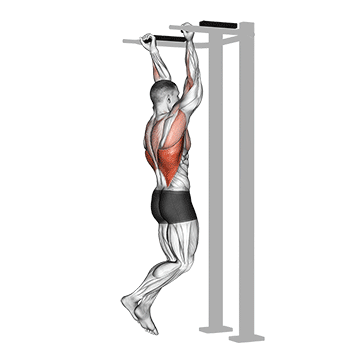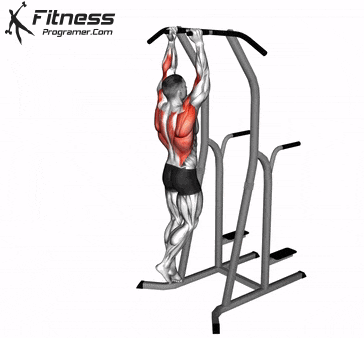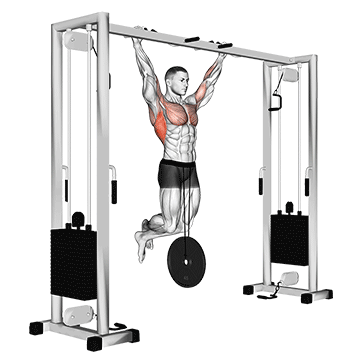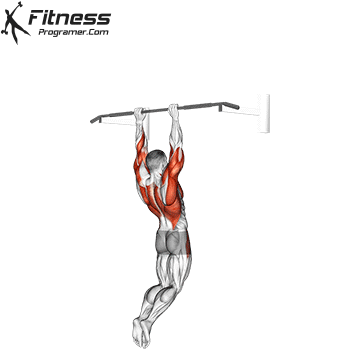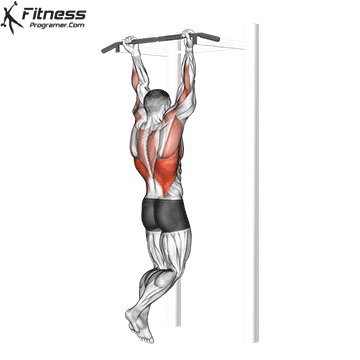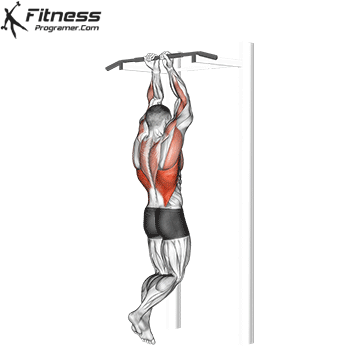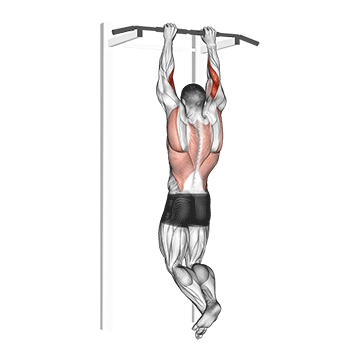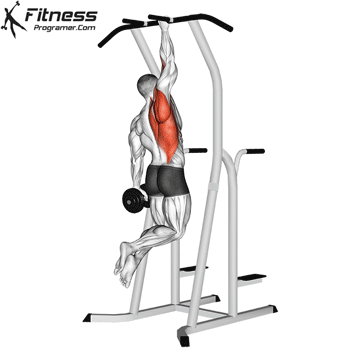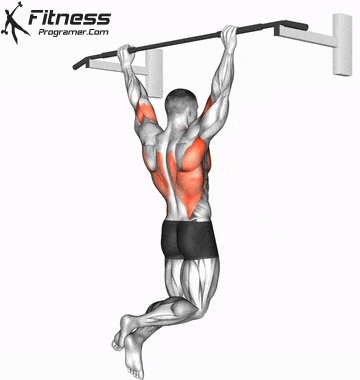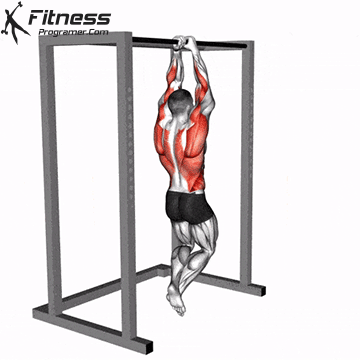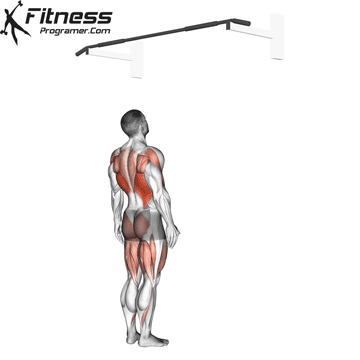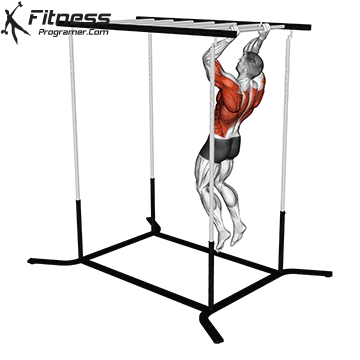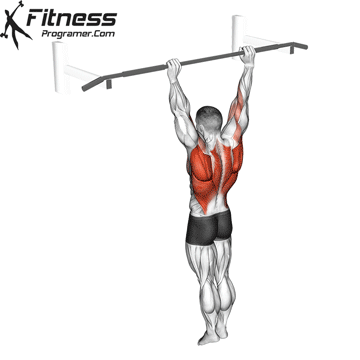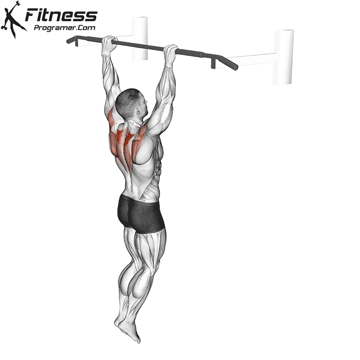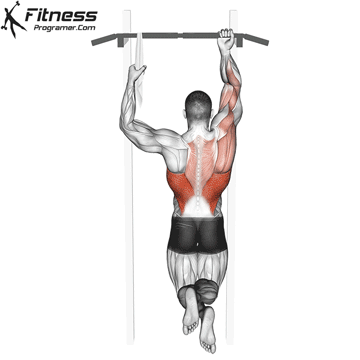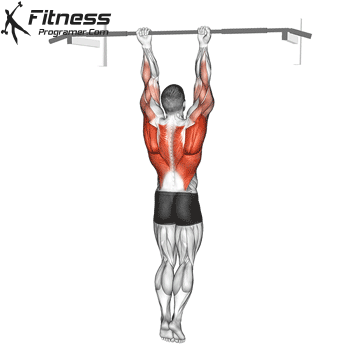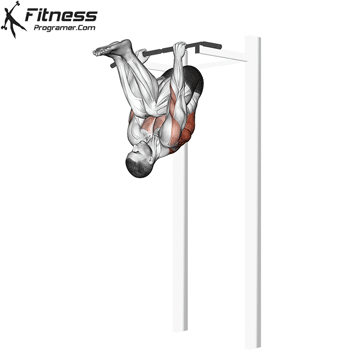Overview
The pull-up is a foundational bodyweight compound exercise that targets the back, arms, and core. It’s widely used in strength training, military fitness tests, calisthenics, and sports performance programs due to its ability to build upper body pulling power and muscular endurance with minimal equipment. It requires coordination between the lats, biceps, rhomboids, and core, making it one of the most effective exercises for developing upper body strength using your own bodyweight.
How to Perform Pull-Up
Grip a pull-up bar with your hands shoulder-width apart, palms facing away.
Hang from the bar with arms fully extended, legs straight or slightly bent.
Engage your core and back, then pull your chest toward the bar.
Drive elbows downward, squeezing your shoulder blades together.
Pause briefly at the top, with chin above the bar.
Lower yourself slowly and with control to the starting position.
Tips for Proper Form
Start from a dead hang with full arm extension.
Engage the scapula first to initiate the pull with your back, not just arms.
Avoid swinging or kipping if doing strict reps.
Keep your neck neutral and shoulders down.
Pull in a straight vertical path, avoiding chest flaring.
Common Mistakes
Half reps without reaching full extension or chin above the bar.
Using momentum or kipping unintentionally to cheat the movement.
Shrugging the shoulders instead of retracting the scapula.
Letting the legs swing, which reduces control.
Relying too much on biceps, neglecting lat activation.
Benefits of the Pull-up
When it comes to compound exercises, the pull-up is arguably one of the most effective movements. As a closed-chain exercise, the pull-up works nearly all the muscle groups in the upper body, promoting both hypertrophy (muscle growth) and strength development using only your body weight.
- Strengthens Back and Latissimus Dorsi (Lats): The primary focus of the pull-up is on the back muscles, particularly the latissimus dorsi (often referred to as “wing muscles”). It is among the most effective exercises for developing and strengthening these crucial muscles. If your goal is to achieve a V-taper physique, incorporating the pull-up movement into your routine is essential.
- Enhances Overall Body Power and Strength: As a compound exercise, the pull-up engages multiple upper body muscles in perfect harmony. Performing pull-ups using your body weight significantly boosts general body strength and core stability, leading to a more robust and resilient physique.
- Supports Correct Posture: By strengthening the muscles surrounding the shoulder blades (scapula) and upper back, such as the infraspinatus and rhomboids, pull-ups help counteract poor posture and conditions like scapular protraction often caused by muscle weakness.
- Provides Cardiovascular Benefits: Pull-ups elevate your heart rate. When performed with intensity and minimal rest between sets, this exercise can provide an excellent cardiovascular workout in addition to its strength-building benefits.
- Increases Grip Strength: The act of gripping the bar tightly during a pull-up directly improves your grip strength. This enhanced grip translates to everyday tasks, such as confidently holding objects or easily opening a stubborn jar.
- Builds Stronger Arms: If you struggle with pull-ups, it often indicates a need to strengthen your arms. Your arms and wrists are actively engaged in all variations of pull-ups. With each repetition, as you lift your body weight, your arm strength increases. Consistently increasing your pull-up count directly correlates with the development and strengthening of your arm muscles.
How to Incorporate Into Your Routine
- For Beginners: Use resistance bands or do eccentric pull-ups for 3 sets of 3–5 reps.
- For Hypertrophy: Perform 3–4 sets of 6–10 strict reps, resting 60–90 seconds.
- For Strength: Use weighted pull-ups, 3–5 sets of 3–5 reps with longer rest intervals.
- For Functional Training: Pair with pushing exercises like dips or push-ups for balance.
- For Circuit Training: Add to high-intensity bodyweight circuits with short rests.
- For General Fitness: Include 2–3 sets to build overall upper body and core strength.
- For Calisthenics Progression: Master bodyweight pull-ups before progressing to one-arm, typewriter, or muscle-up variations.
Pull-up Muscles Worked
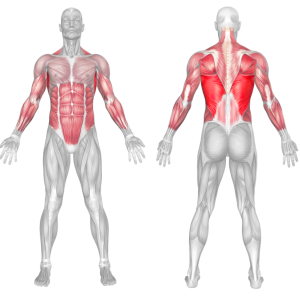
Pull-Up Variations
Frequently Asked Questions
Does Pull-up Increase Height?
While pull-ups are often claimed to increase height, there’s no scientific research to confirm this. They don’t actually make you taller. However, strengthening your back and core muscles through pull-ups can significantly improve your posture, helping you stand more upright and appear taller.
What’s the difference between a pull-up and a chin-up?
Pull-ups use a pronated (palms away) grip, while chin-ups use a supinated (palms facing you) grip, emphasizing more biceps involvement.
I can’t do a full pull-up yet—what should I start with?
Try eccentric pull-ups, band-assisted pull-ups, or lat pulldowns to build strength.
How often should I train pull-ups?
2–3 times per week is effective for most goals, allowing adequate recovery.
Are pull-ups good for fat loss?
As a compound movement, they burn calories and help build lean mass, contributing to fat loss when combined with proper nutrition.

